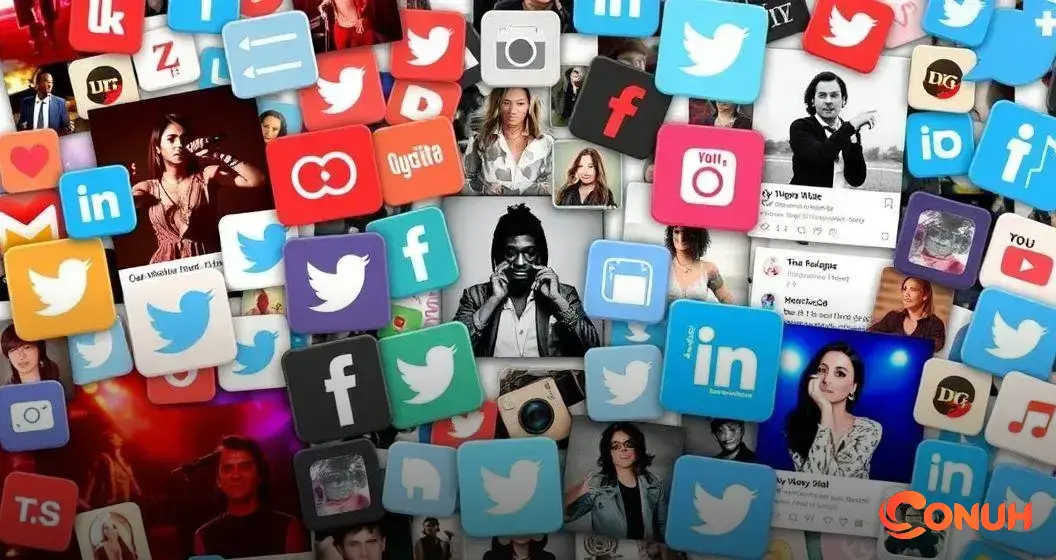ADVERTISEMENT
Music streaming trends are transforming how we experience sound today. With the rise of digital platforms, music consumption has shifted radically.
More listeners than ever are discovering music through streaming services.
ADVERTISEMENT
As new technologies emerge, the ways we engage with music evolve. What’s next in the world of streaming, and how will it shape our auditory experiences? Keep reading to discover what trends to watch in the coming years!
Current Music Streaming Statistics
Current music streaming statistics show that more people are turning to platforms like Spotify and Apple Music for their daily music needs. In fact, recent studies reveal that over 400 million people globally now use a paid subscription for music streaming.
Interestingly, the average listener spends about 30 hours a week consuming music. This increase in usage highlights how music streaming has become a vital part of many people’s lives. Users can access millions of songs right at their fingertips, making music more accessible than ever.
Additionally, statistics show that playlists are incredibly popular, with many listeners enjoying curated selections rather than full albums. This trend shows how people prefer quick and easy ways to discover new music without much effort.
Impact of 5G on Streaming Services
The impact of 5G on streaming services is changing how we enjoy music. With faster data speeds, listeners can stream high-quality music without interruptions. This means no more buffering or delays, making for a smoother listening experience.
5G technology allows for more stable connections, even in crowded places. This is helpful for concerts or events where many people are using their devices. With reliable streaming, fans can easily share and enjoy live performances in real-time.
Additionally, 5G opens the door for new features like high-resolution audio and immersive experiences. Users can explore richer sound quality and even participate in virtual concerts, transforming the way we connect with music.
Emerging Artists and Music Trends

Emerging artists are making waves in the music industry, thanks to music streaming platforms. These platforms help new talent reach audiences who may not have heard of them otherwise. With their unique sounds and styles, these artists are changing the music landscape.
One notable trend is the rise of DIY artists. Many musicians are now creating and releasing their music independently. This allows them to keep complete control over their work and connect directly with fans without a record label.
Additionally, collaborations across genres are becoming increasingly popular. Artists are blending different styles to create fresh sounds. This trend not only reaches wider audiences but also sparks creativity, leading to exciting new music experiences.
The Role of AI in Music Discovery
AI plays a significant role in music discovery, helping listeners find new songs and artists they might love. Streaming platforms use AI algorithms to analyse listening habits and make recommendations. This means users are more likely to discover music that matches their tastes.
One exciting aspect of AI in music discovery is its ability to create personalized playlists. These playlists can adapt over time, learning from a listener’s choices. This technology ensures that users always have fresh and relevant music to enjoy.
Moreover, AI can identify emerging trends by analyzing millions of songs. It helps artists understand what sounds are popular and guides them in creating music that resonates with audiences. This leads to more innovative and exciting music for everyone.
Subscription Models: Pros and Cons
Subscription models for music streaming offer several advantages. One major pro is affordability. Users can access vast libraries of music for a monthly fee, which is often cheaper than buying individual songs or albums. This makes it easier for fans to explore new artists and genres without spending too much money.
However, subscription models also have downsides. Some users may feel locked into a payment plan. If they stop subscribing, they lose access to the music they’ve come to love. This can be frustrating for those who wish to own their music instead of simply renting it.
Another consideration is the variety of subscription options available. Some platforms offer family plans or student discounts, which can be helpful. But finding the right plan can be confusing. Users need to compare benefits and costs to choose what best fits their needs.
Social Media’s Influence on Streaming

Social media plays a big role in shaping music streaming today. Platforms like Instagram, TikTok, and Twitter help artists promote their music easily. When a song goes viral on social media, it often leads to a huge boost in streams. Fans love sharing their favorite tracks, making it easier for new artists to be discovered.
Moreover, social media allows listeners to engage directly with their favourite musicians. Fans can comment on posts, share music, and even attend virtual events. This connection creates a sense of community, making listeners feel closer to the artists they love. The more engaged fans are, the more likely they are to stream and support the music.
However, social media can also create pressure for artists. They must constantly post and interact to stay relevant. Sometimes, an artist’s success depends more on their social media presence than their music talent. This can be a tough balancing act, as artists strive to keep their artistic integrity while also reaching a wider audience.
Regional Trends in Music Streaming
Regional trends in music streaming show that each area has unique preferences. For example, Latin music is gaining popularity in the Americas, while K-pop is a sensation in Asia. These trends shape what listeners enjoy based on cultural influences and local artists.
In Europe, streaming habits can vary widely between countries. For instance, Nordic countries often lead in streaming rates, with many listeners favoring indie and electronic genres. Meanwhile, Western European countries may lean towards pop and rock music. This diversity highlights how geography affects music tastes.
Moreover, streaming platforms are adapting to these regional tastes. Many services now offer localized playlists that cater to specific audiences. This helps users discover music that reflects their culture and language, further enhancing the streaming experience. As trends evolve, platforms continue to innovate to meet the needs of diverse listeners around the world.
User Experience Improvements
User experience improvements in music streaming services are making it easier for listeners to enjoy their favourite songs. Many platforms have simplified their interfaces, allowing users to find music quickly. Clear menus and smart search options help listeners discover new tracks without frustration.
Personalization is another key aspect of user experience. Streaming services now offer tailored recommendations based on listeners’ preferences. By analyzing past choices, platforms suggest songs and playlists that match individual tastes, making music discovery much more enjoyable.
Moreover, user feedback is being taken seriously. Streaming companies regularly update their apps based on what users want. This means faster loading times, better sound quality, and new features that keep the listening experience fresh and engaging. As technology advances, music streaming continues to evolve to meet the needs of its audience.
The Future of Live Music Streams

The future of live music streams is bright and full of possibilities. As technology advances, artists can reach fans all over the world through virtual performances. This means fans who can’t attend concerts in person can enjoy live music from the comfort of their homes.
Moreover, live streaming events can be more interactive. Fans may have the chance to chat with artists during performances or participate in special Q&A sessions. This can create a personal connection that makes the experience even more exciting and memorable.
Finally, as platforms improve streaming quality, audiences will enjoy clearer sound and better visuals. With features like holographic effects and 360-degree viewing, the experience can feel almost like being at a live concert. These innovations are changing the way we enjoy live music, making it more accessible and engaging than ever before.







